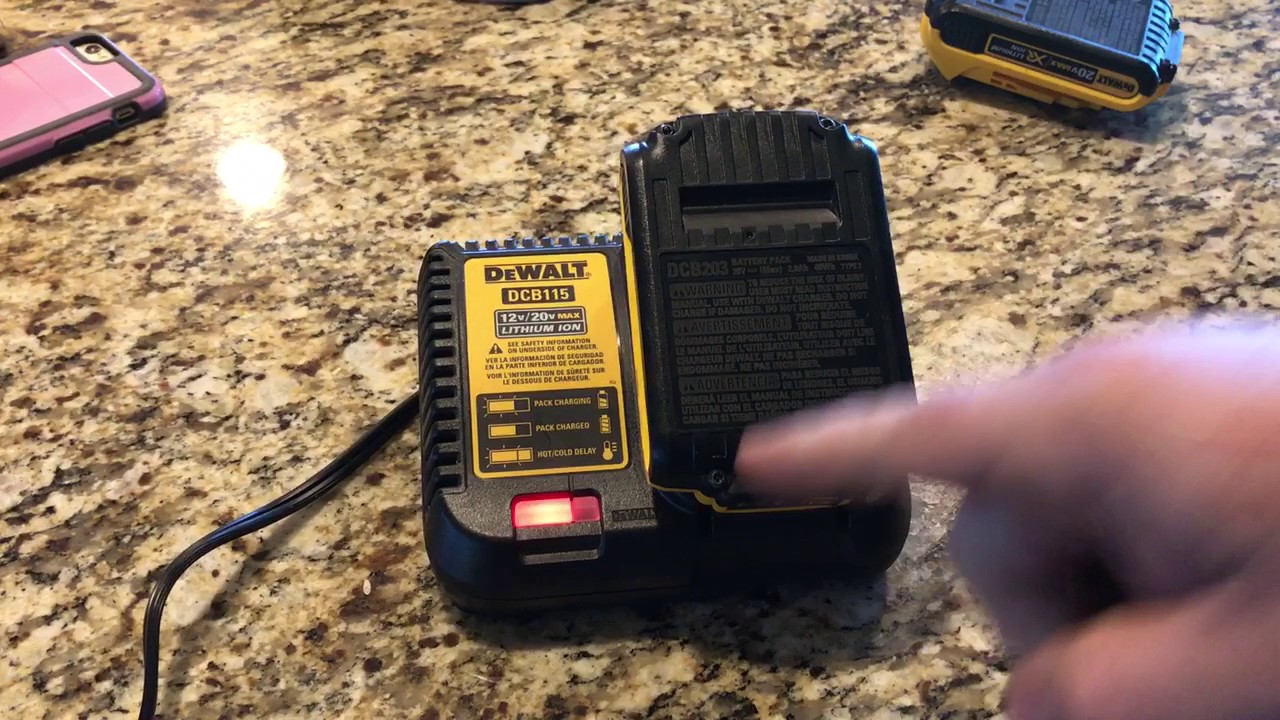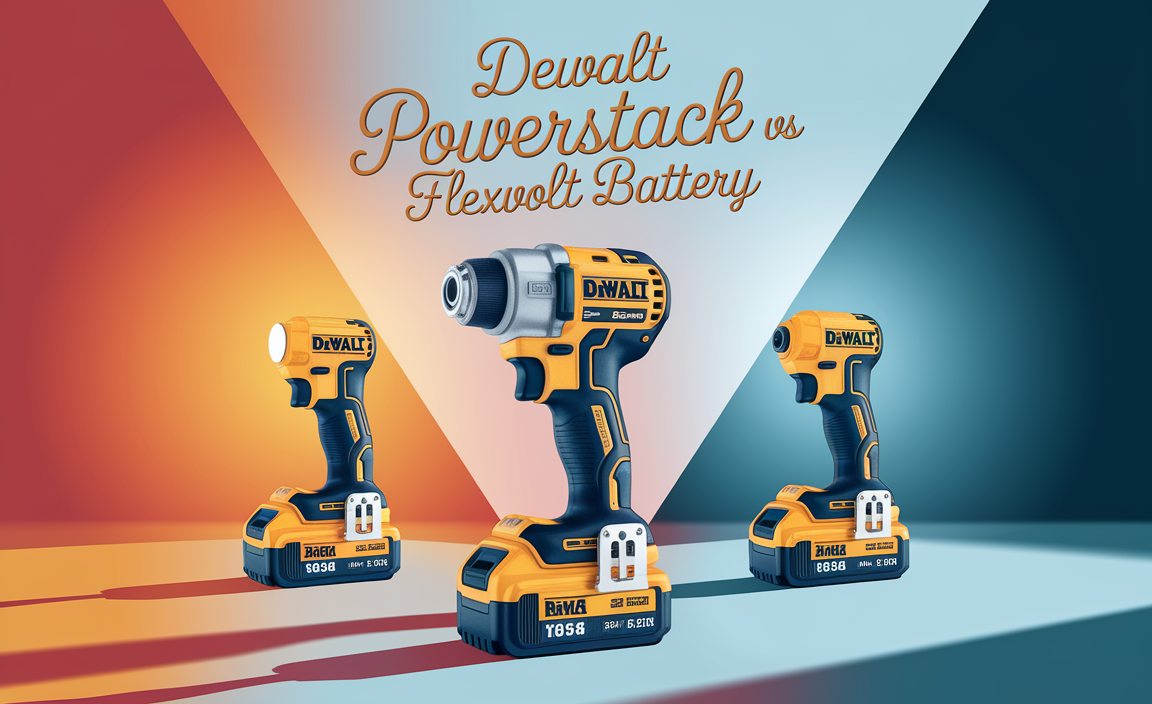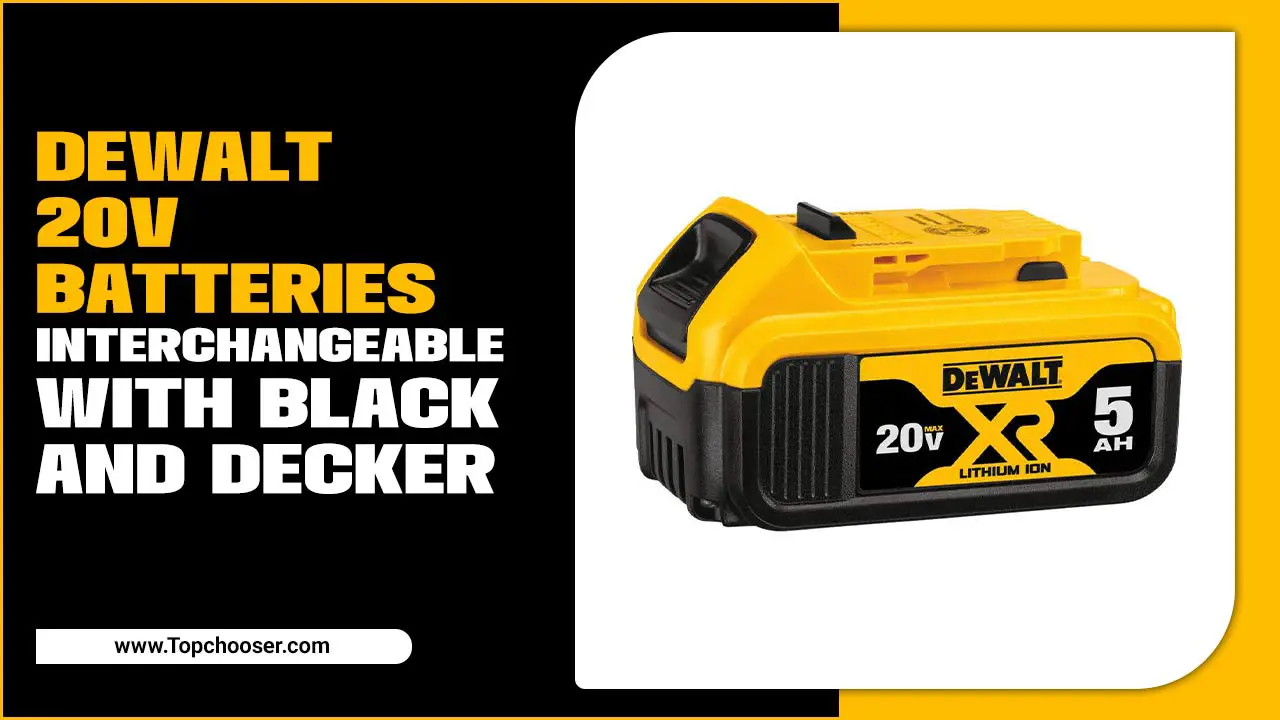Regarding power tools, there are few brands as trusted and respected as Dewalt. Professionals and DIY enthusiasts alike turn to Dewalt for their reliability, durability, and cutting-edge technology.
With a range of cordless options available, Dewalt has become a top choice for those who need tools that are versatile and efficient. However, when choosing between their 60v and 20v lines, the decision can be difficult. Both offer unique advantages and disadvantages, and it ultimately comes down to your specific needs and preferences.
This is why we have decided to break down the ultimate showdown: Dewalt 60v vs 20v. In this blog post, we will explore the key differences between these two lines, including power output, battery life, and compatibility with other Dewalt tools. We will also highlight the best use cases for each line, helping you make an informed decision based on your specific needs.

Head To Head Difference Between Dewalt 60v Vs 20v

The difference between Dewalt 60V vs 20V systems is important as it determines the power output, battery capacity, tool compatibility, weight, size, and cost. The 60V system offers more power and longer runtime for heavy-duty tasks, while the 20V system provides versatility, availability, and affordability for general applications. Choosing the right system depends on specific needs and requirements.
Power Output:

Comparing the power output of Dewalt’s 60V and 20V systems, the 60V system generally offers higher power. The increased voltage of the 60V system allows for more energy to deliver to the tool, resulting in greater torque and faster cutting or drilling speeds.
This makes the 60V system ideal for heavy-duty applications that require more power, such as cutting through thick materials or handling demanding construction tasks.
On the other hand, the 20V system provides sufficient power for most common tasks and is suitable for general use. It’s important to note that power output is not the sole determinant of a tool’s performance, as factors like motor design and efficiency also play a role.
Battery Capacity

Comparing battery capacity, Dewalt’s 60V system outperforms the 20V system. The 60V batteries have a higher capacity, allowing them to store more energy and provide longer runtime. This is beneficial for demanding tasks and extended use without frequent recharging.
The 20V batteries have a lower capacity, which may result in shorter runtime and the need for more frequent charging. It’s important to note that battery capacity directly affects the tool’s performance and the duration it can operate.
The 60V system is generally preferred for heavy-duty applications where sustained power is required, while the 20V system is suitable for lighter tasks. Ultimately, the choice depends on the user’s specific needs and the nature of the projects they undertake.
Tool Compatibility

When tool compatibility, the Dewalt 20V system has a broader range of options compared to the 60V system. The 20V tools are more widely available and offer a diverse selection to choose from, including drills, impact drivers, saws, and more. This extensive compatibility makes it easier to find the right tool for a specific task or project.
On the other hand, the 60V system is more limited in its tool lineup, focusing primarily on heavy-duty applications. While it may have fewer options, the 60V system still offers essential tools like circular saws, reciprocating saws, and miter saws.
Ultimately, the choice between the two depends on the user’s specific needs and whether they require the broader tool selection offered by the 20V system or the specialized heavy-duty tools of the 60V system.
Weight And Size
Comparing the weight and size of Dewalt’s 60V and 20V systems, there are notable differences. The 60V system generally features larger battery cells, which result in larger and heavier batteries compared to the 20V system. This can affect the overall weight and size of the tools.
The 60V tools tend to be bulkier and may be less maneuverable, while the 20V tools are typically more compact and lightweight, offering increased portability and ease of use. The weight and size considerations are important factors to consider when selecting a system, as they can impact user comfort, tool control, and the ability to work in tight spaces.
Cost
Comparing the cost of Dewalt’s 60V and 20V systems, there is typically a difference in pricing. The 60V tools and batteries are generally more expensive compared to the 20V counterparts. This higher cost can attribute to the increased power and capacity provided by the 60V system.
Additionally, the 60V system is often geared towards heavy-duty applications. Which may require more advanced technology and materials, further contributing to the higher price point. On the other hand, the 20V system offers a more affordable option while still providing sufficient power for most tasks. Ultimately, the choice between the two depends on the specific needs, budget, and intended usage of the user.
Common Applications For Each Voltage Rating

Voltage rating is a crucial factor in any electrical system as it determines the amount of voltage that a device can handle and the amount of power it can transmit. There are different voltage ratings for different electrical equipment, and each rating has its common applications.
For instance, low voltage ratings such as 12V and 24V are commonly handy in automotive systems, security systems, and home appliances. These ratings are often handy for devices that require low power, such as LED lights, doorbells, and thermostats. Medium voltage ratings such as 1kV to 35kV are commonly handy in industrial and commercial settings for power transmission and distribution.
These ratings are handy for devices such as transformers, switchgear, and circuit breakers. High voltage ratings such as 110kV and above are handy in power stations and large industrial plants for power transmission over long distances. These ratings are handy for devices such as large transformers, generators, and transmission lines.
Pros And Cons
To choosing between Dewalt’s 60v and 20v tools, there are pros and cons to consider. The 60v tools are known for their exceptional power and long battery life, making them a great choice for heavy-duty tasks. However, they tend to be larger and heavier than their 20v counterparts, which can make them more difficult to maneuver in tight spaces. Additionally, the 60v tools come with a higher price tag and may require additional investment in batteries and chargers.
The 20v tools are more affordable and lightweight, making them a great option for DIY projects or tasks that don’t require as much power. They are also more compact, which makes them easier to handle in tight spaces. However, their battery life may be shorter than the 60v tools, and they may not be as suitable for heavy-duty tasks.
Which Dewalt Tool Line Is Right For You?

When choosing a Dewalt tool line, there are a few factors to consider. First, think about the kind of projects or tasks you’ll be using the tools for. If you’re a professional contractor or construction worker, the Dewalt FlexVolt line might be the best fit.
These tool is design to deliver maximum power and runtime for heavy-duty applications. On the other hand, if you’re a DIY enthusiast or hobbyist. The Dewalt 20V MAX line could be a great choice. These tools are lighter weight and more affordable.
While still offering plenty of power and performance for most home improvement projects. If you’re looking for a balance between power and versatility, the Dewalt XR line might be the sweet spot. These tools are designed to be both powerful and flexible, with features like brushless motors and interchangeable batteries.
Conclusion
If you’re looking for the ultimate showdown between the Dewalt 60v and the 20v, it can be hard to decide which one is the right fit for you. On the one hand, the 60v offers more power, while the 20v is more lightweight and easier to maneuver.
Whether you’re a professional looking for the most powerful tool on the job, or a weekend warrior looking to take on tougher projects. It’s important to consider your individual needs before you purchase. The Dewalt 60v vs 20v? Here’s the truth: it all depends on your needs. If you’re a professional contractor looking for power and durability, the 60v is your best bet.
But if you’re a DIY enthusiast looking for a versatile tool with a lighter weight, then the 20v is the way to go. Whatever you choose, you can’t go wrong with Dewalt’s quality and reliability. So, go ahead and get your DIY on, or take on that big project with confidence. Knowing that Dewalt has got your back.
FAQ
[rank_math_rich_snippet id=”s-3ac47215-deb7-41b7-abd9-f2d988b28400″]

I am passionate about home engineering. I specialize in designing, installing, and maintaining heating, ventilation, and air conditioning systems. My goal is to help people stay comfortable in their homes all year long.




